|
Last week, I worked on a fun commission: restoring an antique towel cover. This particular piece is over a hundred years old and has been in the owner's family from the beginning. The cover sports typical symbols known from Dutch and German cross stitch samplers: vases with flowers, pomegranates, peacocks and women in folk costume. The embroidery was executed with cotton perle #5 in only six colours: pale yellow, orange, red, light blue, medium blue and dark blue. Whilst the blue threads are still in perfect condition, the red and orange have completely gone and the yellow has gone in some places too. A stark example of the influence of a particular dye on thread survival! The fabric is a fine closely woven linen measuring 59 cm from selvedge to selvedge. Peculiarly, the selvedge is still perfect on the right, but starts to fray on the left. Any thoughts on this? Since the pattern is quite fun and I know that there a cross stitch and sampler fans among my readers, I've transcribed the pattern and offer it as a free download here. Note: the colours stated in the pattern are not exactly the original colours. Rather they are a red, orange, yellow and three blues in Anchor stranded cotton. I mended this sampler using antique threads made by DMC and Schürer. The exact colours were not or no longer available from either DMC or Anchor.
P.S. just to add to the 'leaving a knot on the back' debate: the knots were the only things remaining when it came to the red and orange threads :)
13 Comments
Monday is my preferred blogging day. However, yesterday was a hilarious day and it messed up my order of work completely. And since it is too funny not to share, I will! So, when I came home from my morning swim, my Bavarian mum needed my help. Since the fire, the whole family moved in the holiday apartments above and beneath us. As she needs to cook for this very hungry family, they put in a new kitchen. Now imagine somebody going from a traditional big Aga cooker to a hyper-modern touch-screen electrical stove... And yesterday this hyper-modern menace had put itself to sleep in the middle of cooking lunch! Now, the farmer has coped very well with the loss of his farmhouse and his cattle, but not finding lunch on the table at 12:30h would have been disastrous. After reading the manual several times and doing exactly as stated, the bloody thing came to live again. Lunch saved! But, that wasn't the end of my woes. My mum called from the Netherlands and needed help with the settings of her newish mobile phone... Last time we visited Strawberry Fayre, I had put in the scrolls, tendrils and large flowers on the front and back heart. This time, we are going to talk about the big leaves. I must confess that I have a hard time stitching this project. Although I really liked stitching 'Home Sweet Home', I don't seem to get into a stitching rhythm with this project. Now don't get me wrong, I don't mind stitching to be slow. But I hate it if I don't get into some sort of rhythm. If I need to put each stitch into place very carefully, I lose interest. But first, what I do like! There are three types of big leaves in this part of the project. And two of them involve beads. Now that's something I am definitely taking away from this project: adding beads to ordinary embroidery stitches. This is tremendous fun! One of the leaves has a beaded version of knotted pearl stitch and the other a beaded version of coral stitch. Both brilliant. You can see the first type in the picture above and the second one in the picture direct below. The third type of leaf features wheat ear stitch without any beads (see below). To add sparkle to all leaves, high-lights and edges are stitched with a metallic thread by Au ver a Soie. Over the years, me and metallic threads have learned to get along. However, adding high-lights and a double edge in and around tiny shapes isn't for the faint hearted. It all seems a bit much and a bit over-complicated. The part where I really struggled, is at the tip of each leaf. You are supposed to do a padded buttonhole stitch with one strand of Gumnut spun silk. This is a tihgtly twisted silk and one strand is quite comparable to one strand of stranded cotton. This means there is no 'spread'. It is extremely difficult to get it to sit nicely on top of the padding AND follow the curve of the leaves. Carolyn seems to have solved this problem by making very long stitches. I tried to copy this approach, but my stitches kept sliding off the padding. I also found it very difficult to keep a neat edge where the stitches do not touch the other part of the leaf. Although I used a fine tipped marker to transfer the pattern, due to the fineness of the thread, the lines where still too fat to maintain a clean edge. Furthermore, I am really happy that I choose to stitch the whole piece on a much finer fabric than the one that came with the kit...
So, how will I move forward? I will leave it for now. But, I will probably take out the tips of most leaves and try again. The flow of some of the leaves is just too ugly and way below my standard. Any tips gratefully appreciated! And then, I'll move onto the strawberries. And they promise to be great fun as there is beads involved! Note: I never finished this project as the instructions were faulty and there was not nearly enough material in the kit. But before all that, I will be stitching two commissions. Of which one involves repairing a sampler that's over a hundred years old. More on that next week! When I visited the Diözesanmuseum Brixen in Italy last year, I was captivated by one chasuble particularly. It wasn't particularly old or made with extraordinary skill. But to me, it just screamed: FUN to embroider. And I had seen this particular technique before on an unfinished sampler in the collection of the Wemyss School of Needlework in Scotland. The particular pieces were made with fibrant coloured silks in a simple couching technique (Bayeux Stitch) and seem to originally date to the 17th century. Then my internet search began. I proved not to be the first to write about 'Italian couching'. In 2007, Mary Corbet wrote an article about 'Italian Stitching' on her blog Needle 'n Thread. Through the related articles, I found the book Mary had originally consulted: Church Embroidery and Church Vestments by Lucy MacKrille written in 1939. You can download it for free here. If you like goldwork embroidery and embroiderying with silk, you'll love it! And what does it say on 'Italian Stitch'?: Italian stitch in which stout floss is used for a foundation is the most beautiful of stitches. The floss is stretched across the surface from end to end of the design, care being taken not to twist a fibre, so that when the surface is covered it will be as smooth as satin. The finest gold thread is then laid across the silk in lines one-eight of an inch apart and couched evenly. The beauty of this stitch depends on the glossy smoothness of the floss, the straightness of the lines of gold, and the evenness of the bricking or couching stitches (MacKrille, 1939 p. 27-28). Hmm, not my 'Italian Couching' after all. The examples I saw in the Museums in Northern Italy were al couched with matching silks, not with gold thread. Could it be that 'Italian Stitch' was actually an Anglo-American invention and not of true Italian origin? Let's check with Pauline Johnstone writing on Italian Embroidery in 'Needlework: an illustrated history' edited by Harriet Bridgeman and Elizabeth Drury from 1978. There it says: An alternative technique was laid and couched work in colored silks, crossed and held down by spaced lines of gold thread. ... Many vestments of this type are attributed to Napels, where the Kings of Napels and the Two Sicilies held a wealthy and lucurious court (Plate 45). (Johnstone, 1978, p. 143). So, what does Plate 45 show? Not much in a book from 1978. It is in colour, but a whole chasuble at only 10,2x9,3 cm, doesn't tell a whole lot. Luckily, this particular chasuble is held at the Victoria & Albert Museum in London. And they have a digital archive! You can find the entry for the chasuble featured in the 1978 book here. Lo and behold! This is indeed the needlework technique I have seen in a few pieces in Northern Italy and the unfinished sampler in Scotland. And as you can see, the laid silk is couched with a matching silk thread. Not with a gold thread.
So, can you see what happened here? An authority on 'modern-day' church embroidery from America, but who studied embroidery in England, wrote on a couching technique with silks and gold thread she had learned and used in 1939. Later researchers on Italian needlework presumed this was a historical technique used in 17th century Italy. They had a bad photograph from the V&A collection and a brief description naming floss silks and silver-gilt thread. Combining the two into a Bayeux stitch with silks and gold thread. Now don't get me wrong. The Itialian Stitch embroidery executed by both Lucy MacKrille and Mary Corbet looks absolutely stunning. But it does not seem to have been a historical needlework technique in use in 17th century Italy. However, if you have come across a historical piece made in Italy which does use gold thread as the couching, please do let me know! In the mean time, I'll keep my eyes peeled for more pieces in this fascinating technique. Yeah, I have re-surfaced after a nice long break over the holidays. And I have big plans for 2018. Actually, some were not only conceived during my lovely break, but put into action as well. So what have me and my husband been up to? For starters, we re-decorated my studio and changed its lay-out. We repainted the walls and ceiling in a pretty blue colour; like the egg of a blackbird. Then I put in a large set of map drawers. Perfect for thread storage, if you have the space for such a monster. This will save me so much time searching for the right threads. And it will hopefully prevent me from buying the same supplies twice... My clever husband installed a professional art gallery hanging and lighting system to display my framed embroideries beautifully. Of course not as easy to install as the instructions claimed, but a bit of swearing sometimes helps :). I am pleased as pie with the results: Next up: the checkout of my webshop. As not all people seem to like PayPal, I installed a few more payment options. You can now also use your credit card, Apple Pay and Android Pay through a Stripe interface. Unfortunately, my website host Weebly has not enabled SEPA or Ideal in its Stripe interface yet. I keep nagging them about it, so hopefully they will expand the interface in the future. I've also amended my opening hours. Since my doctor has strongly recommended that I take up swimming to prevent my shoulders and hips from becoming too painful to embroider, I duly dip in the pool three times a week. As the pool is not exactly next doors (and the lake in front of the house frozen over), it takes a few hours out of my working week. Luckily they have great water slides! My new opening hours are: Monday & Friday 13-17h and Tuesday & Saturday 9-17h. And what's in store for next year? I am planning to keep traveling to see more historic embroideries. There is so much out there! But unfortunately, little is known about it in the wider embroidery community. Not in the least due to language barriers and a false sense of national/regional pride and protectiveness. That's a real shame. My idea is to publish a few ebooks on specific historical embroidery techniques with references to places where you can study the originals. The ebooks will contain pattern drawings and step-by-step explanations so you can try your hand at it too. First up is Italian couching from the 17th century. In essence it is Bayeux stitch using silk instead of wool. After all, the Italians are not known for huge flocks of beautiful sheep :). But they were the first to produce silk in Europe.
That's all for now. Time for a cup of coffee, before digitising some more embroidery patterns. Have a nice week! |
Want to keep up with my embroidery adventures? Sign up for my weekly Newsletter to get notified of new blogs, courses and workshops!
Liked my blog? Please consider making a donation or becoming a Patron so that I can keep up the good work and my blog ad-free!
Categories
All
Archives
July 2024
|
||||||||
Contact: info(at)jessicagrimm.com
Copyright Dr Jessica M. Grimm - Mandlweg 3, 82488 Ettal, Deutschland - +49(0)8822 2782219 (Monday, Tuesday, Friday & Saturday 9.00-17.00 CET)
Impressum - Legal Notice - Datenschutzerklärung - Privacy Policy - Webshop ABG - Widerrufsrecht - Disclaimer
Copyright Dr Jessica M. Grimm - Mandlweg 3, 82488 Ettal, Deutschland - +49(0)8822 2782219 (Monday, Tuesday, Friday & Saturday 9.00-17.00 CET)
Impressum - Legal Notice - Datenschutzerklärung - Privacy Policy - Webshop ABG - Widerrufsrecht - Disclaimer

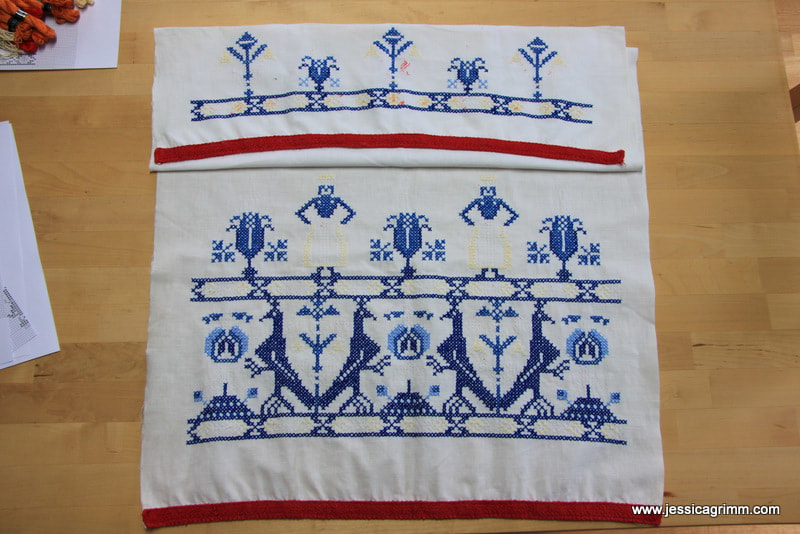
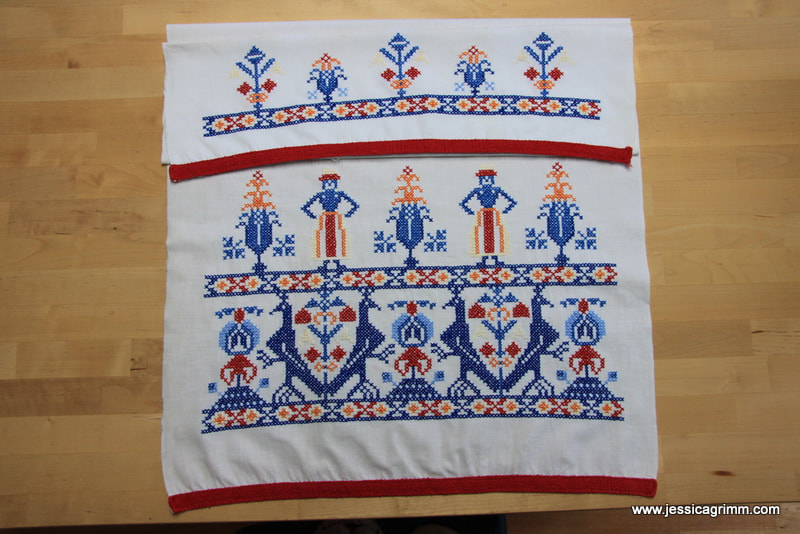
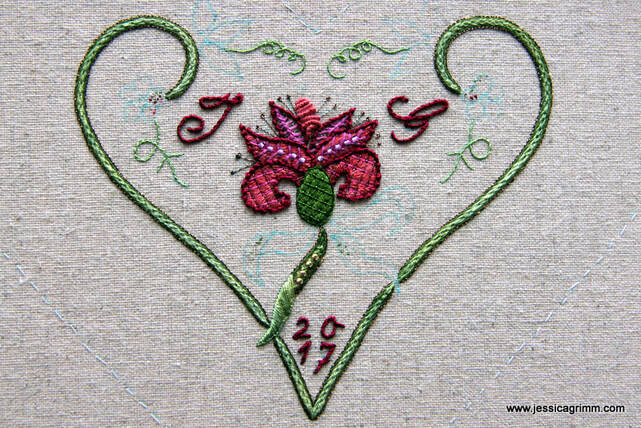
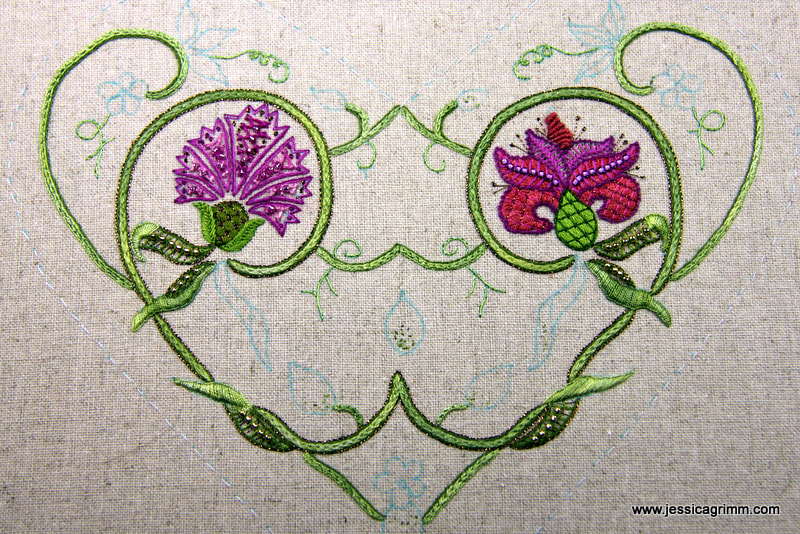
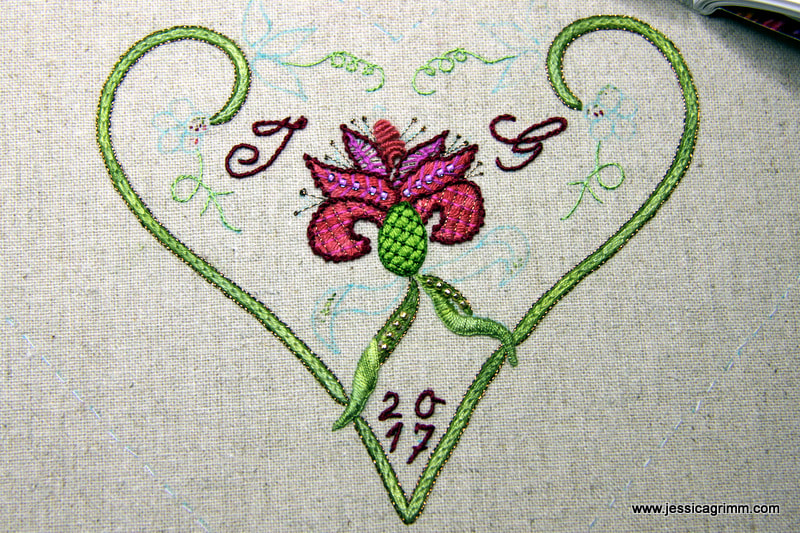
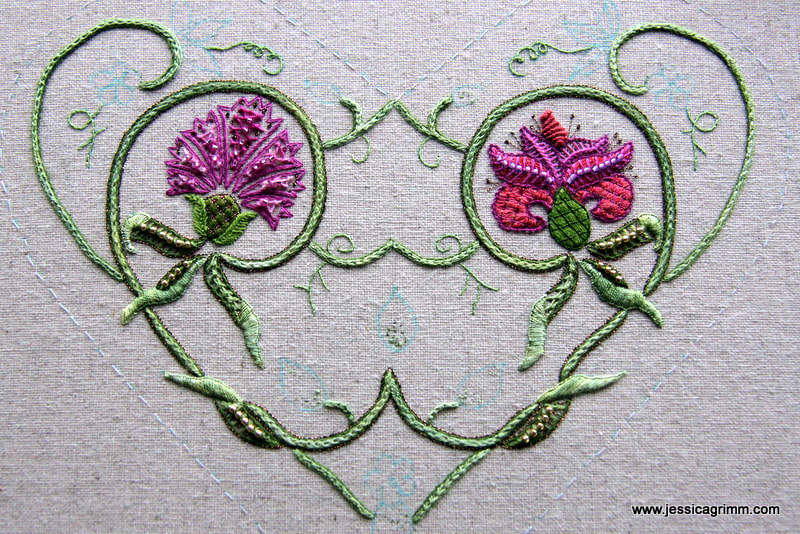
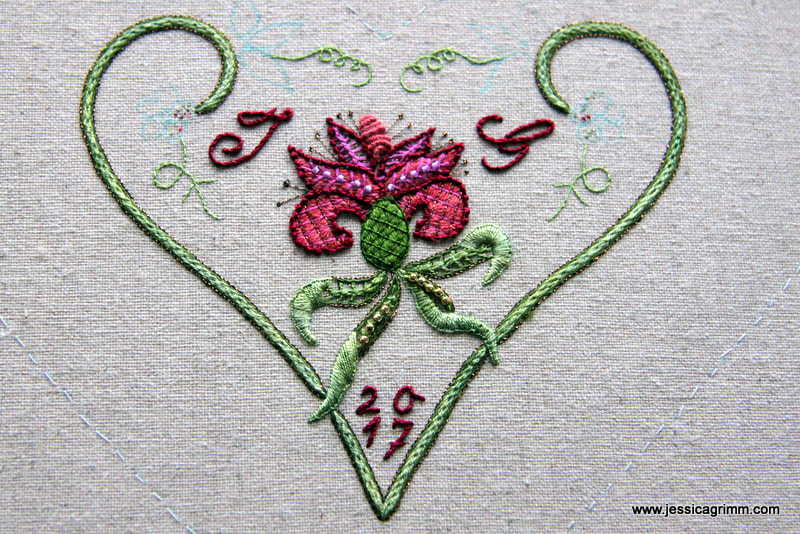
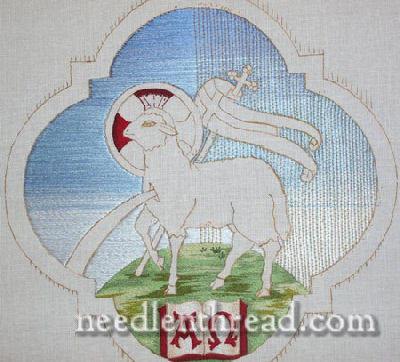
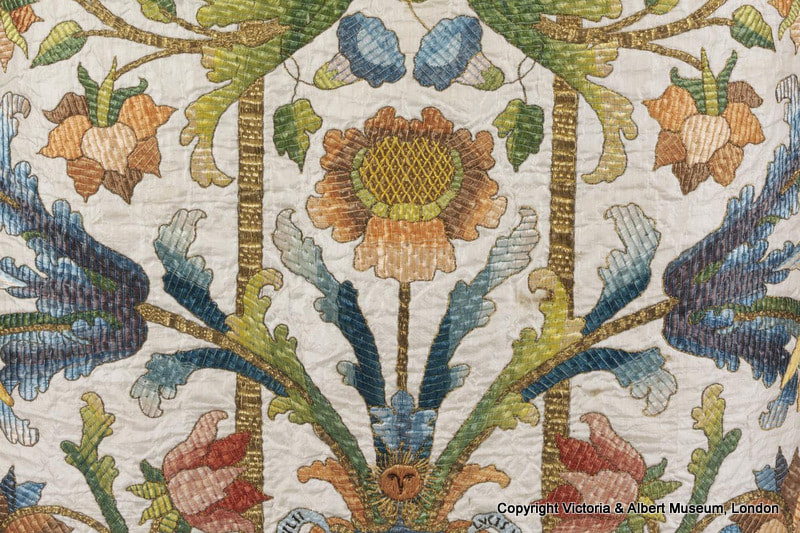
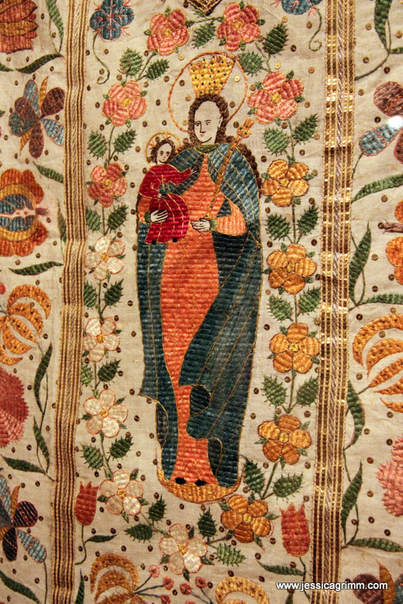





 RSS Feed
RSS Feed